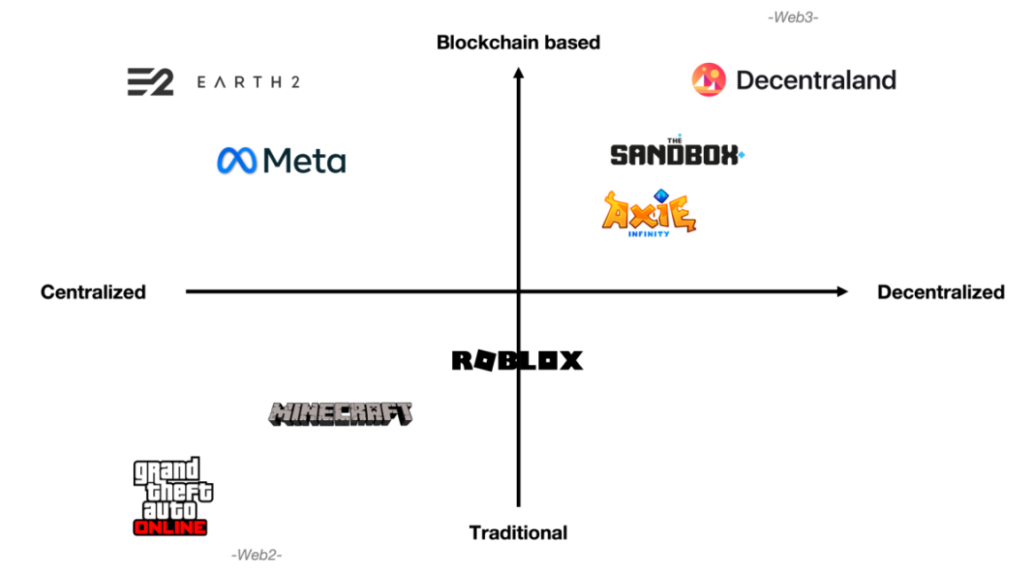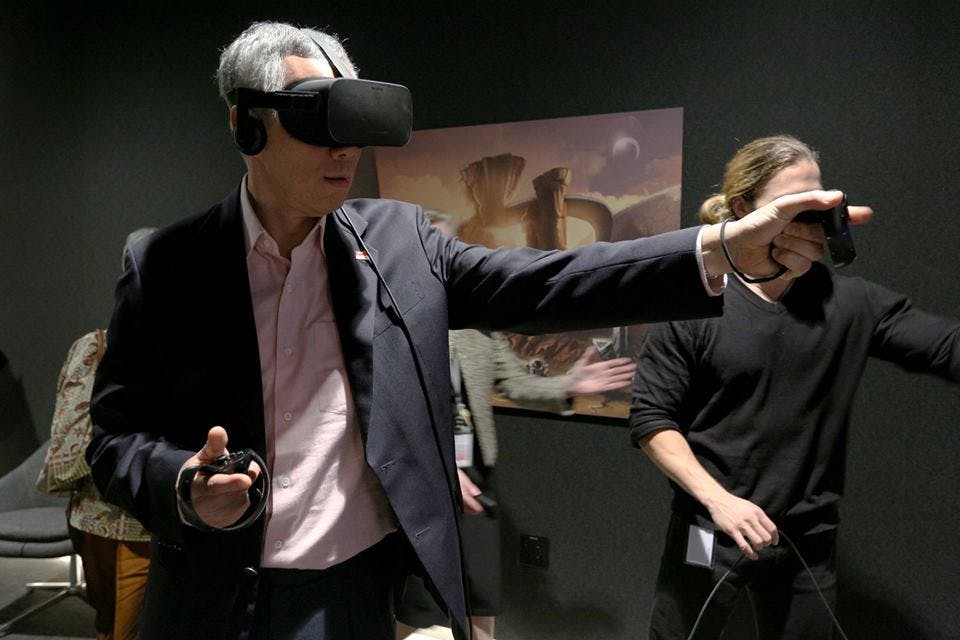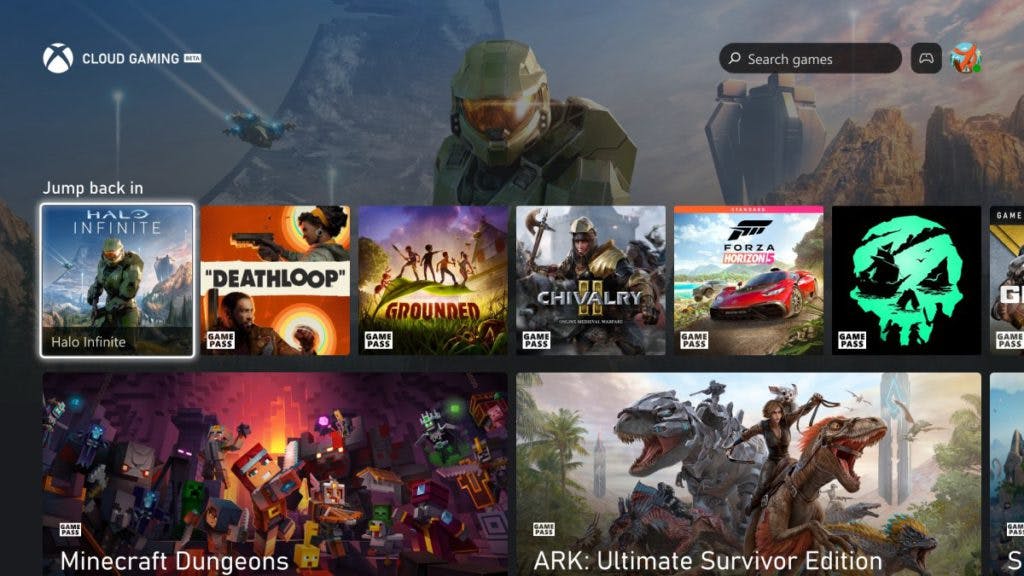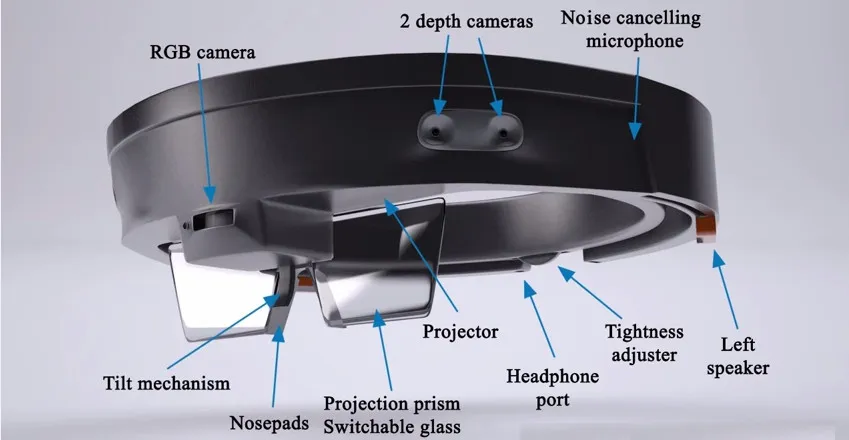From testing computer processing power, AR, VR and now playing high-intensity games while in a Tesla, video games have regularly pushed the boundaries of what’s possible. In this article, we take a look at what the future of Gaming might potentially look like.
The video game industry is one of the fastest-growing industries today. With an audience ranging from teens to people in their 50s, gaming is for everyone. But despite featuring such a wide demographic, the industry is quite often one of the first to adopt new technologies. In the past few months, there are have been rapid strides in the adoption of new technologies in gaming and esports.In this article, we explore the future of gaming and how different it might look compared to 2022.
There are many ways one can enjoy video games today. You might be sitting in front of your high-end computer with the latest graphics card, playing video games at the highest resolution possible. You can also connect your console to your television to enjoy optimized games running at 4k. Or you might be holding a Nintendo Switch in the airplane, playing pre-loaded video games at 30,000 feet. There is another alternative, one that’s quite new but not unimaginable enough to warrant its place in a dystopian future.
On December 14, 2022, Tesla announced a new holiday update for its Series S|X cars. Users would be able to play thousands of Steam games in their Tesla even as the car drives itself. Looking back it seems to be a natural progression for Tesla, a company that strives to provide as much value on the entertainment front as it does in its cars. The Tesla-Steam announcement is not even the wildest future of gaming we can think of, but it is definitely one of the more exciting ones - one that is already possible in 2022.
What does the future of gaming look like?

Think back to 2010, people were still using feature phones to make or receive calls. Text-based messaging is insignificant compared to today, with only a few SMS being used and that too only when necessary. Yes, there were outliers and extremely costly devices that were well advanced compared to feature phones, however, they were few and far between. As of 2021, there were 15 billion mobile phones all over the world. That’s 15 billion for less than 8 billion people.
The world is rapidly changing and what was the norm a decade ago is extinct today. You don’t see a lot of feature phones around. So what does the future of gaming look like? What are the technological leaps that might transform how we game and how we entertain ourselves? Let’s have a look.
The Metaverse

In October 2021, FaceBook rebranded as Meta, a name that showcased its renewed focus as a comapny. “The metaverse will feel like a hybrid of today’s online social experiences, sometimes expanded into three dimensions or projected into the physical world” the announcement read.
“We believe the metaverse will be the successor to the mobile internet, we’ll be able to feel present – like we’re right there with people no matter how far apart we actually are.”
What is the metaverse?
In simple terms, a metaverse is a virtual place where people can live their lives. It’s an opportunity for users to portray digital representations of themselves on the internet. These so called ‘avatars’ can do everything you do in real life and a bit more. They can meet other avatars, go to concerts, play physical games, go to restaurants, shop, and a lot more.
So how do you access the metaverse? For now, it’s via VR headsets, for example, Facebook’s Oculus VR headsets or the HTC Vive. VR headsets have embedded stereoscopic lenses placed between the eyes and the screen to provide a life-like experience to the user.
But the metaverses (the generic term, not Facebook’s Metaverse) have problems. And they are not easy to navigate. In many of the new metaverses announced, the world development is still nascent and as a result, the interest in the virtual world is nowhere near as expected But with tech companies investing billions of dollars, we can expect more and more people to join and start exploring the metaverse. The question is - what is the real metaverse?
Different Types of Metaverse

Meta, Fortnite, Minecraft, GTA V are all different types of metaverses. While today’s metaverses are mainly a virtual space, the metaverses planned for the future, including Mark Zuckerberg’s are based on blockchain technology.
Traditional metaverses are basically just role-playing video games. A central authority controls every aspect of the metaverse and its decisions have a binding impact on the users’ ability to play the game or interact with each other.
However, DAO (Decentralized Autonomous Organization) based metaverses feature a decentralized power system. The users hold power and quite often the in-game virtual currency is a cryptocurrency. These metaverses also feature the play-to-earn game models where users have to play the game to earn in-game currencies. Games like Axie Infinity feature players with a power system that is usually based on their in-game monetary value which for now, often translates into the amount of time and effort they’ve put into the game.
Metaverse and Gaming
One of the easiest ways to get new people to join the metaverse is via gaming. It could be the inclusion of actual game stories into the metaverse or simply gamifying the existing infrastructure. But video games have historically been a great onboarding point for young adults into new technologies. And for gamers, the metaverse is not entirely a new concept. There’s a large section of gamers who have spent thousands of hours in Sims World, World of Warcraft, and more recently even in Fortnite. Fortnite’s virtual-reality-like world-building became a social meeting point for many groups of gamers.
As one of the longest running games today, World of Warcraft communities have gone through their own share of ups and downs - including an in-game pandemic. It's users reasons for spending their time in the WoW realm might differ, but they present a common theme - a sense of belonging.
"The reasons I started playing WoW and why I do now have evolved, but I think that's a given seeing as I've spent 18 years with this game," said Will Harrison, host of the Essence of Azeroth podcast. "In the beginning, and being a 20-something that basically only went to school and worked while also living in an extremely rural area--in addition to living with my parents on 200 acres of land with no neighbors--WoW was freeing. Even on a 32k modem and a bad early video card, there was an RPG that seemed to fulfill the promises and future that all RPGs of the past had always wanted to promise but really could never achieve--evolving, changing worlds where each play session was different than the last. As a kid who grew up without many friends it felt like a connection to the outside world."
For Will, his reasons for playing World of Warcraft changed with time but his initial years in the game were all about the community.
That changed when I got to college, got a real internet connection for the first time, but still kind of found myself in a very isolated space. I went to school five days a week then drove home on the weekends to work. I didn't party or go out, but I did play WoW. And down the road a bit from that I finally made IRL friends that also played WoW and suddenly it was like having someone come along who finally spoke a language out loud that I thought dead.
World of Warcraft might not be as community-driven today as it was several years ago. There are other options for young gamers including the aforementioned Fortnite, Roblox, and Minecraft. The Sims is a sandbox game that allows you to develop your world as you see fit. Started by Sim City in 1989, players are placed in pre-constructed houses or ones that they build themselves.
The origin of the Sims franchise is an interesting story. Developed by Will Wright, the game came to fruition off the developer’s desire to build a ‘virtual doll house’ after losing his home during the Oakland firestorm of 1991.
I started to wonder about all the things we have and how we purchased them for a reason. Why do we need x or y or z? Why do we think something will make me happier? It almost came down to Maslow’s pyramid of needs.
And this need of having something online that will make you happy is at the core of the metaverse. It will allow users to possess virtual things - sort of replicating their approach to the virtual world based on their experience in the real world.
Second Life

One of the first, if not the very first implementations of a virtual world was Second Life. Developed and owned by the San Francisco-based firm Linden Lab and launched on June 23, 2003, the game saw rapid growth in its initial years. It boasted nearly a million users as of 2013 with over 500 articles written daily about Second Life at one point in time. While the primary viewpoint of many of its users is that Second Life has a game-like quality, partly due to the animated graphics and visuals, the developer insists it is not a game.
“There is no manufactured conflict, no set objective. It’s an entirely open-ended experience,” says Linden Labs spokesperson Catherine Smith in 2014.
After reaching a peak of a million users in 2013, Second Life saw its user base decline. The virtual reality world once boasted companies like Coca-Cola and Harvard University which had set shop in this universe. With a daily average of around 200,000 per day, Second Life is far from its peak but continues to remain an exciting alternative universe for its users. There have been issues for the company, ranging from copyright infringement to the safety of users as well as security concerns. And these are some of the same issues that will cause problems for any variation of a metaverse in the future.
But how does Metaverse involve Gaming?
A 2022 study in the American Journal of Medicine found games like Animal Crossing helped many users with their mental health during the COVID-19 pandemic. With no outdoor activities during the pandemic lockdowns, video games became a social component in people’s lives. And transitioning to video games as a social meetup point was not all that difficult for many gamers. With voice comms embedded into most games and chat facilities available, games like Animal Crossing became a virtual world where people replicated some of their real-world activities.
Even before the pandemic, game companies had led the way in creating a social environment within their video game communities.
Marshmallow’s Fortnite concert smashed viewership records with over 10 million players in attendance within the game. This was over and above millions of viewers on online platforms such as Twitch, YouTube, and more. Since then, Epic Games has held even more concerts within their game and their seasonal end-of-year events often serve to bring the entire Fortnite community together.
Second Life has been doing its own ‘metaverse’ since 2003. It was an idea well ahead of its time and yet garnered significant interest in its early years.
Metaverse was a generic term used to describe the ‘virtual worlds’ coming into existence. However, Facebook decided to name its brand ‘The Metaverse’ and that blurs the distinction quite a bit. When we talk about the metaverse, we are not just talking about the former Facebook company, but also each and every metaverse or virtual world, big or small.
Will users migrate to the Metaverse? Getting users online into a new virtual world will require much more effort and finesse than currently being projected. Gaming companies have been doing this for several years, some even for decades. But tech companies are just catching up and so far, they’ve been doing a poor job of their versions of the metaverse.
Cloud Gaming
Remember Google Stadia? Well, that service might have crashed after a pompous start, but the concept of Cloud Gaming has not. So What is Cloud Gaming? It is a method of playing video games using servers that are in the data centers. It means you don’t have to download video games to your computer and then play. Instead, you can try out new games, and play video games without having to worry about how your computer can handle those titles or the graphical demands of those games.
Google Stadia’s shutdown surprised many although Google’s track record of supporting its services has not been the best. The decision to shut down Google Stadia was mostly due to the lack of user growth said Phil Harrison, Vice President and General Manager of Stadia. Despite being built on strong technology, cloud gaming has not really taken off as expected, leading to lower-than-expected growth.
The underlying technology platform that powers Stadia has been proven at scale and transcends gaming. We see clear opportunities to apply this technology across other parts of Google like YouTube, Google Play, and our Augmented Reality (AR) efforts — as well as make it available to our industry partners,
Google Stadia’s failure and the lack of growth for other cloud gaming services, however, does not mean that we will not see gaming in the cloud in the future. As hardware continues to get more expensive and games continue to demand more of the user hardware, moving to the cloud is but a natural transition. There are many things that need to be done to onboard users en masse, however. This includes adopting even better technology, one that possibly does not require users to boot up their game before they can play.
Booting up the game is a friction point, one that is definitely a big reason why users don’t prefer cloud gaming just yet. The second reason is latency. The biggest concern when it comes to cloud gaming is the latency achieved between the servers and the user’s machine. If this latency is low, the user gets the best experience without having to pay for the costliest hardware, one that might be obsolete in a few years.
In a way, Google Stadia was like Uber, Netflix, or Airbnb. Taking the concept of the sharing economy to the video games industry, Google Stadia offered users the best experience for a fraction of the price. You don’t own the game, and you don’t own the hardware but you can experience the game to its best from the comfort of your own home.
There is a future where the majority of the gaming industry takes place on the cloud. It is a move that will happen fuelled by increasing hardware costs, reduced latency, and better partnerships. Partnerships and exclusivity form crucial components of the gaming industry today. The PlayStation - XBOX wars of 2021 were defined by Sony’s exclusive partnerships with several top video game titles on their console. If and when the gaming market moves to the cloud, I can see a scenario where companies like Sony, Microsoft, Epic Games, Valve, and significantly more exclusive games on their cloud gaming platform.
Virtual Reality

Stanley G. Weinbaum’s ‘Pygmalion's Spectacles’ in 1935 is one of the earliest records of the mention of virtual reality. The short story features a device that replicates visuals and sound, much like today’s VR headsets.
There are already several virtual reality games available in the market. Half-Life: Alyx is one such example, a game developed by Valve only for VR. But there are also many more including Beat Saber, Mini Gold, and more.
Virtual Reality features images created by a computer that appears to surround the person making it look very much like real life. In order to access virtual reality, a person has to use an interface. Today a VR headset is the medium via which a user can access virtual reality, which can seem quite lifelike but is most definitely not.
VR headsets include screens, cameras, sensors as well as LEDs. The headsets often work in conjunction with peripheral devices like motion tracker suits and gloves to produce output.
One of the key concepts of wearing a VR headset is its ability to showcase content in 3D. It does this by allowing images to overlap. The human eyesight has an overlap angle of 114° which lends itself to display images in 3D. Virtual Reality headsets also manage to do the same and future headsets are even working on providing greater FOV and reducing the latency - both of which will enable users to have a more immersive experience.
Industry veteran, John Carmack, the name behind games like Quake and Doom recently resigned from Meta. He was the company’s VR Chief Technical officer. One of the biggest proponents of virtual reality, Carmack was frustrated with the company’s inefficiency in VR progress.
This frustration is something that the end user resonates with as of 2022. VR headsets are often costly with little to no games available. For PS4 users, the options are extremely limited while PC users don’t have a lot of variety either.

When VR headsets were initially launched, they sold quickly due to the novely of the technology. But several years later, many of the initial buyers find themselves scratching their heads due to the lack of options in VR gaming.
"It’s either a port of a game you already played or a fun game but it has one gimmick which gets old quickly" says Lawrence Phillips, Editor in Chief, esports.gg as he's reminded of the VR headset that he used to play with once upon a time.
PC games, while more in number, still feel restrictive for an audience that is used to thousands of games on PCs and consoles.
The size and shape of a VR headset is yet another big reason for its lack of popularity. The VR headset has to be worn over your head, which means the weight needs to be light enough and the form should be a good fit for different kinds of head shapes. At the same time, it should also not be too loose, otherwise, you won’t get the same experience and feedback as you move your head to look around in your virtual world.
I also find myself unable to use it for very long as it makes me feel a little discombobulated afterward.
But the technology is here. Valve created Half-Life: Alyx, a game specially designed for VR headsets. The game received widespread acclaim and has continued to also receive small updates, adding a few hours of gameplay.
And with advancements in technology, although at a much slower pace than one would have envisioned a few years ago - Virtual Reality will be one of the first new technologies for today’s gamers to transition over to.
Augmented Reality
No talk of Virtual Reality is complete today without mention of Augmented Reality. Augmented Reality has seen widespread use partly fueled by the Pokemon Go craze of 2016. With over 600 million downloads in September of the same year, Augmented Reality feels closer to home for many users.
AR superimposes a computer-generated image on a user’s view of the world. The composite image is much closer to real life experience compared to Virtual Reality and as a result, has seen significantly higher rates of acceptance.

At its peak, Pokemon Go had over 131 million players worldwide. For its developer, Niantic, Pokemon Go also brought in significant revenue netting almost $4.5 billion at the time of writing.
For today’s gamers, Augmented Reality is much closer to being a finished product than the metaverses of virtual reality.
AI in video game production
ChatGPT has taken the world by storm recently. The use of AI in a text has astonished the average internet user even though it’s not quite a new phenomenon. By AI standards, ChatGPT is probably not the most advanced, but it is one of the only direct-to-consumer uses of Artificial intelligence.
AI is also in use in Image generation. Named for Salvador Dali and Pixar’s Wall-E, Dall-E creates images based on text prompts. The Open-AI Image generator has startled the public because now making graphics is as simple as inputting a string of text into a text box. Then the AI does the rest for you.
Jason Allen’s Théâtre D’opéra Spatial won the Colorado State Fair’s fine arts competition in August, sparking a debate on the use of AI-generated images.
The biggest concern for AI development is the rapid pace of development. With AI using massive computing power, it is already outpacing human’s ability to form rules and regulations surrounding its usage. Soon, the web will be flooded with AI-generated content. At that point, it might become a dystopian future where you don’t know if you should trust what you see on the internet.
AI is mastering human language faster than ever and the widespread use of ChatGPT has brought this to our attention. But computers can understand 0s and 1s even better than humans, so it is not completely unimaginable to expect AI to start developing video games in the near future. They might even create their own programming language. After all, video games have the least human interaction and AI has a lot of available data to go through. Initially, video games might be very similar to existing MOBAs and FPS games. But over time, as they continue to develop, it will be interesting to see what direction video game development might take.

Currently, most video games have constant updates - partly fueled by developers listening keenly to community feedback. Things like competitive integrity, dealing with overlooked cultural misappropriations, and more are swiftly corrected. Séb Krier, Senior Tech Policy Researcher, Cyber Policy Center has written in detail on the rapid pace of AI development and why people need to take a step back and seriously ponder over its implications.
The clearest case of improvements in AI is their ability to win at games once thought to require too much creative play for a machine to be able to beat the top human competitors.
The trial-and-error method of teaching means researchers did not have to specify any moves for DeepMind's AlphaGo. Instead, they allowed the AI to learn from its mistakes and present a viable alternative during the actual match. And as the pace of AI learning and development picks up, it's relatively safe to assume, Artificial Intelligence will soon be able to form its own language, whether linguistic or programming.
But in a scenario where AI assumes primary control over a video game’s development and maintenance, the question remains of whether and how it will listen to community feedback. Game developers often rely on feedback from the community and professional players to finetune their video games. But will an AI also do the same? And if it does, which feedback does it determine as worthy enough to implement a change and which ones won't make it past the AI veil of secrecy?
Mobility in Gaming
Playing Cyberpunk while being driven around in a Tesla is already possible and with time, we will be able to see more entertainment options in autonomous vehicles. We can already watch movies, play video games, and of course the old-audio entertainment in vehicles.
Video Games have had different mobilities and each category has had its own level of success. From PCs that are extremely immobile (or at least very hard to lug around) to consoles to even handheld devices - the latest being Nintendo Switch, video games can be enjoyed in a variety of ways.
Games take on multiple forms - either sitting at home in front of your computer, playing on a console that is somewhat movable, and finally, handheld devices like Nintendo Switch, The Steam Deck, and more. But as you go more mobile, the processing power of your device often sees a decline. But with more investments and processing power, we can expect a future where the best hardware is available and mobile at the same time.
We’ve all played video games on handheld devices with significantly less computing power. But that was as a child, as a teenager. As the same demographic of people grows up, we are seeing them still continuing the trend, this time in Teslas. Not only is playing video games much more mainstream today, it is actually one of the selling points for selling high end luxury vehicles.
A Change in the gaming Demographics = Easier adoption of new technology
There is a notable difference in video game consumption with age. The younger generation tends to be more competitive. This competitiveness reduces as people age, but that does not always translate to a loss of interest in gaming.

Data suggests that the desire for competitive video games declines faster for men compared to women. However, it’s also important to understand that the level of competition score for men starts off at a much higher level comparatively.
But the continued interest in gaming bodes well for the gaming industry. As young gamers start growing older and venture into different careers, we are seeing increasing adoption of new technologies and products in gaming. With VR headsets, metaverse, and even Tesla Gaming predicting rapid adoption, there is an incentive for companies to actually invest in new technologies and market them to their customers. Which technology takes a lead and actually becomes a mass market category will depend on initial impressions and investments, but one thing is for sure.
Technology and gaming go hand in hand. And the future of gaming will have visuals quite out of a dystopian futuristic movie.
Featured Image Credit: Photo by Tima Miroshnichenko on Pexel
Stay tuned to esports for the latest gaming news and updates.



